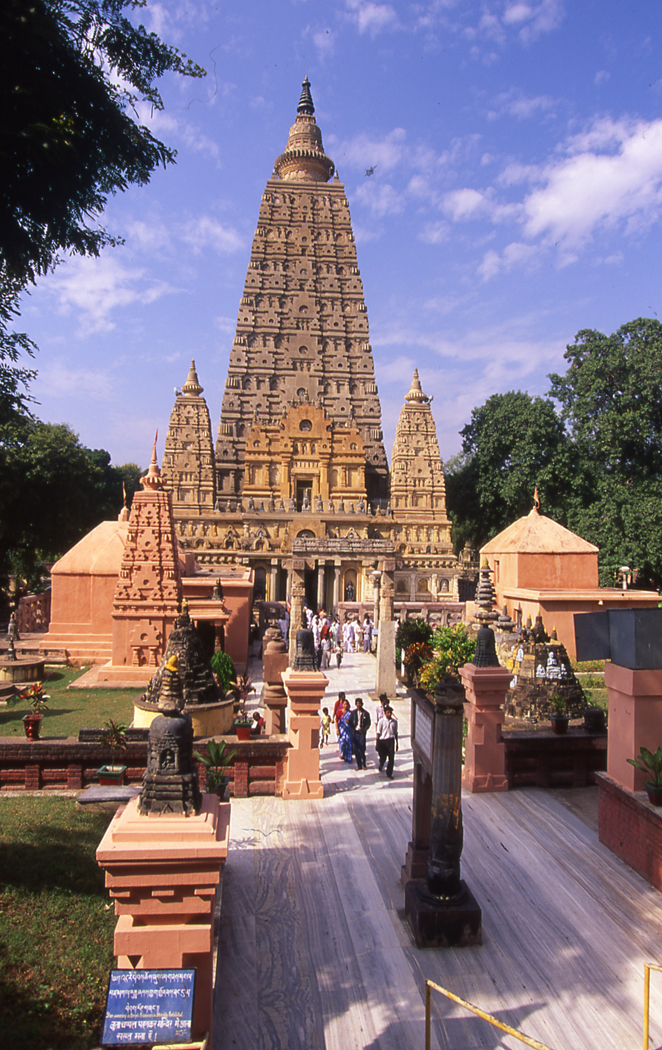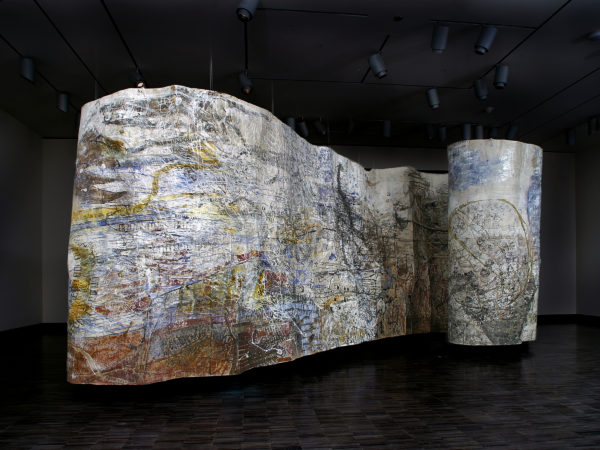Activity
Mahabodi Temple at Bodh Gaya, India

Mahabodi Temple, Bodh Gaya, India
What is this building?
The photograph shows the Mahabodhi Temple at Bodh Gaya, in the state of Bihar in eastern India. This temple stands next to a descendent of the bodhi tree under which the Buddha achieved enlightenment. This site is the most important pilgrimage site in the Buddhist world, similar to Varanasi for Hindus or Mecca for Muslims.
The building we see here is a fairly modern restoration, carried out by the Burmese and English in the 1800s. The foundations and inner core of the temple, however, are much older, and they give us one of the few surviving examples of a northeastern Indian temple structure. There are two levels of shrines at the temple, on top of which rises the 54 meter tower. The tower consists of many stories, which become more compressed towards the top. The four small towers were added in the 1800s.
The most important place at the site is the tree shrine, located at the back of this photograph. The present tree is believed to have come from a cutting from a tree in Sri Lanka, itself brought to Sri Lanka from the original tree by the son of the emperor Ashoka (272–231 BCE). Ashoka, who was a great imperial patron of the arts, erected a shrine here, and his platform still exists between the bodhi tree and the present temple structure.
How did art function at this site?
Eastern India was the last stronghold of Buddhism before it was largely eradicated in India around the 1100s. A number of sites in the area, such as Bodh Gaya and the university at Nalanda, became important pilgrimage centers and were visited by Buddhists from around Asia. Images from this site were copied or carried back in the form of souvenirs to places such as Burma, Tibet, and beyond. We have a famous account by the Chinese monk, Xuanzang (602–664) who traveled through this area as part of a fifteen-year journey into the heartland of Buddhism.
Statues from this area, and might have stood in one of the niches on the walls of temples such as Mahabodhi temple, or at university complexes such as Nalanda. Images showing the Buddha touching the earth to witness his claim of enlightenment became very popular, both as ephemeral pilgrimage images that were widely reproduced, as well as in the form of much more costly stone sculpture.
What goes on at this site today?
Bodh Gaya is located within a very poor region of India. Despite this fact, pilgrims from around the world continue to visit the site. Buddhist nations have set up their own temples and lodgings around the town in order to accommodate visitors. Many Tibetans can be seen here in the winter months. Visitors remove their shoes at the main entrance to the temple (as at any Buddhist or Hindu place of worship) and walk clockwise around the temple on one of the many paths that surround it. Some visitors chant or meditate at the site.
Monks pray by carrying out prostrations facing the temple. The bodhi tree is covered in vibrant textiles. Votive candles are lit. Flowers are placed on the Asokan platform. Hindus visit the site as well, and some consider Lord Buddha to be one of the incarnations of Vishnu.





